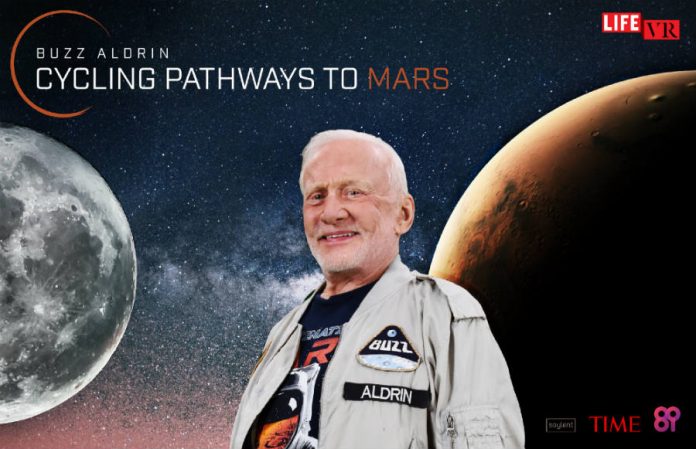
Earlier this week at South by Southwest (SXSW), the production company 8i joined Buzz Aldrin to present a VR film titled ‘Buzz Aldrin’s Cycling Pathways to Mars.’ The feature includes a hologram of the astronaut that guides viewers on a tour to Mars.
The virtual reality experience lasts just ten minutes and it is on display at the Austin, Texas event. VR platforms like Steam and the HTC Vive also have had the film available since last Friday. Users can watch a trailer on Android and iOS too using the Life VR app.
Aldrin wants to expand his legacy beyond being the second man to set foot on the Moon after Neil Armstrong. He wants to be remembered for spearheading an initiative to establish a human colony on Mars in the next few decades.
Aldrin planned a scaled trip to the Red Planet
The 87-year-old astronaut legend has long wanted humanity to push their boundaries way beyond the Moon landing. He has had his sight set on Mars since the mid-80’s and now wants to fulfill his dream of sending humans to the Red Planet.
Buzz Aldrin’s Cycling Pathways to Mars envisions the creation of a route between Earth and our nearest neighbor to make the six-month journey a little easier on astronauts embarking on it.
In simple terms, Aldrin’s plans consist of setting up stations in the Moon, Phobos, and Deimos as pit stops for space travelers, much in the way that cycling pathways have checkpoints to rest and look at the scenery.
However, these stations may someday serve a more functional purpose holding supplies and equipment for both spacecraft and crew members headed either way of the journey.
The idea is that two spaceships go back and forth between the Earth and Mars and that on either extreme of the route they pick up or drop manned capsules every six months. These ships would be known as Aldrin Cyclers.
Moreover, the astronaut’s vision aims not only at visiting the Red Planet but staying on it. Aldrin proposes a project that launches 18 people to Mars every two years until 150 settlers make up the first human colony ever in outer space.
NASA is testing a VR communication platform
Buzz Aldrin’s SXSW exhibit began when NASA was testing virtual reality as a communication platform with astronauts in space missions. The agency studied the emotional response crew members had upon seeing holographic versions of people back on Earth.
This project caught the attention of the veteran space cowboy, who then set on to collaborate with NASA on a Microsoft Hololens experience called Destination: Mars. It debuted last year at the Kennedy Space Center in Florida.
Now, researchers are taking seriously the feasibility of using VR as a more lifelike and human-like platform to relay messages between people here on Earth and those in orbit. Aldrin is also taking part in this initiative.
Source: TIME










